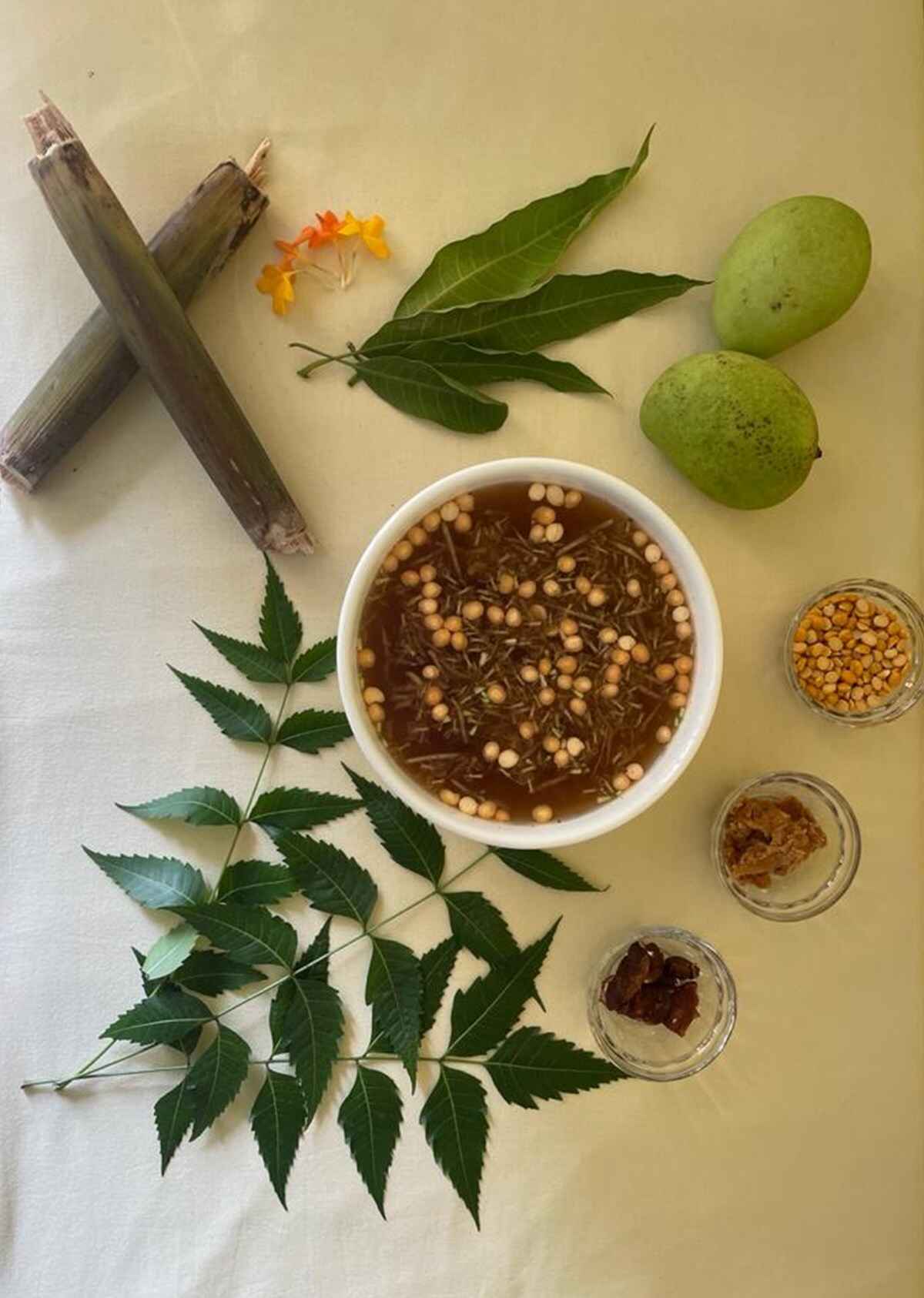Traditionally prepared on Ugadi, this delectable recipe also has many health benefits - The Indian Express
Ugadi, also known as Yugadi, marks the onset of the New Year in many Indian states like Andhra Pradesh, Telangana, Karnataka, and Goa. The auspicious day, being celebrated on March 22 this year, is observed by drawing colourful patterns on the floor called muggulu, mango leaf decorations on doors called torana, giving gifts and preparing a special dish — pachadi.
Interestingly, the ugadi pachadi is a festive recipe that combines all flavours — sweet, sour, salty, bitter, astringent and piquant. In Telugu and Kannada traditions, it is a symbolic reminder that one must expect all flavours of experiences in the coming year and make the most of them. As such, it signifies that life is a mixture of happiness, sadness, anger, disgust, fear and surprise. Traditionally, Ugadi Pachadi is the first dish offered to deities on this festival, after which it is consumed as prasad by devotees.
While primarily made of neem flowers, raw mango, jaggery, pepper powder, coconut and salt, some people make variations of the same too. Some other ingredients that are used are fried gram (putnalu pappu), cashews, raisins and sliced banana. Hence,
*The sweet taste comes from jaggery, and it symbolises happiness.
*Astringent or pungent taste comes from raw mangoes, and it stands for the surprises in life.
*Bitter taste is from neem flowers, which represent sadness.
*Tamarind gives a sour taste, which symbolises unpleasantness.
*Salty taste is from salt and represents fear of the unknown phase.
*Hot or spicy taste is from pepper, which stands for anger.
According to Manish Sarna, head chef, Centre Point Hospitality, the dish not only is delicious but also has numerous health benefits because it contains a variety of medicinal ingredients. “The jaggery used in the recipe is high in iron and aids digestion. Tamarind, which is sour, also helps in digestion and reduces fever. Bitter neem flowers purify the blood and have antibacterial properties. The tangy raw mango is high in vitamin C and helps strengthen the immune system,” he said, adding that chillies, which contain capsaicin aid in pain relief.
How to make Ugadi Pachadi
 Traditionally, Ugadi Pachadi is the first dish offered to deities on this festival, after which it is consumed as prasad by devotees. (Source: Wikimedia Commons)
Traditionally, Ugadi Pachadi is the first dish offered to deities on this festival, after which it is consumed as prasad by devotees. (Source: Wikimedia Commons)
*Soak 1 tsp tamarind in ¼ cup of water for around 40 minutes to 1 hour. Then, squeeze the tamarind pulp and keep aside. In a bowl, add this tamarind pulp.
*Then, add ⅓ cup of water.
*Add ¼ cup chopped jaggery.
*Mix well with a spoon, so that the jaggery dissolves.
*Then, add the finely chopped raw mangoes. You can also add bananas, roasted chana dal, dry fruits and coconut.
*Add the neem flowers. If you do not have neem flowers, you can add soaked methi seeds or methi powder.
*Mix in ¼ tsp of black pepper powder.
*Season with ¼ tsp of salt as required. Mix well.
*Offer Ugadi Pachadi to the deities, then serve it to your family.
📣 For more lifestyle news, follow us on Instagram | Twitter | Facebook and don’t miss out on the latest updates!
from "food recipes" - Google News https://ift.tt/KNJaB4c
via IFTTT
Comments
Post a Comment